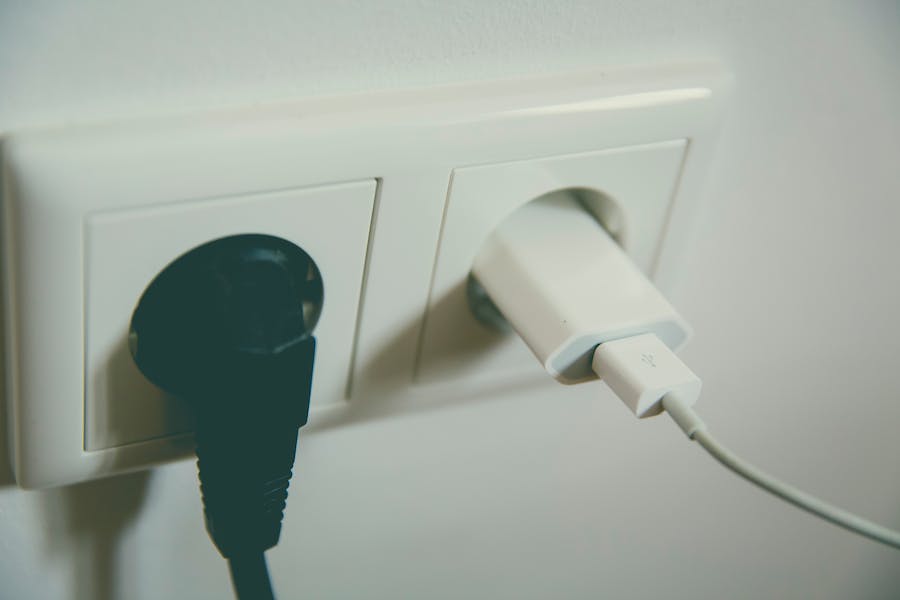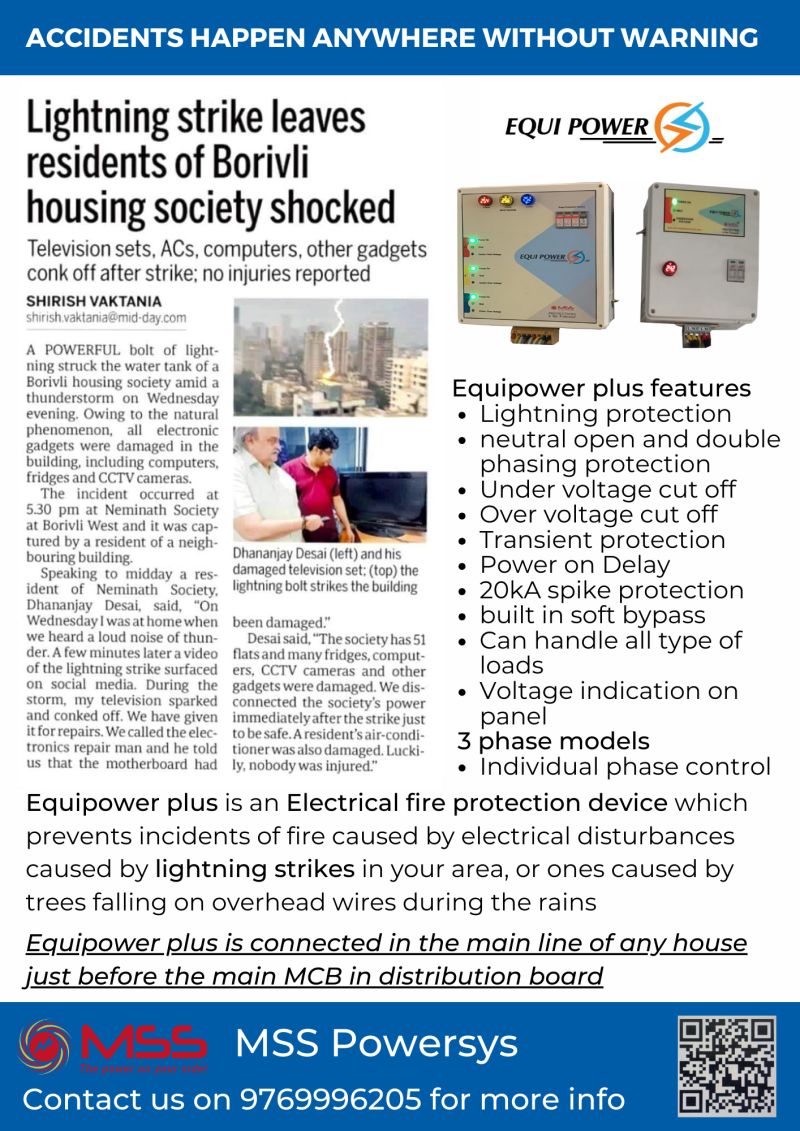
Your neutral wire may have voltage due to an open neutral connection or a current being induced from nearby live wires. This could indicate a serious wiring issue.
Understanding why a neutral wire has voltage is crucial for ensuring electrical safety and functionality in your home or building. The neutral wire, intended to carry current back to the power source, should not typically have a significant voltage. Detecting voltage on a neutral wire can be a red flag for potential hazards such as electrical shocks or equipment damage.
It’s essential to diagnose and address this problem with the help of a qualified electrician to prevent any safety risks associated with electrical circuits. Regular maintenance and checks can mitigate these issues, keeping your electrical systems in optimal and safe working condition.

Credit: www.linkedin.com
Electrical Basics: Neutral Wire Function
The neutral wire is crucial in electrical systems. It works alongside live wires to create a path for current to flow. Understanding this component helps explain why it might show voltage.
Role Of The Neutral Wire In Circuits
Neutral wires carry electric current back to the power source after it travels through your appliances. This creates a complete circuit. It ensures devices work properly and safely.
- Connects to the electrical panel.
- Completes the electrical circuit.
- Helps maintain a safe environment by controlling current.
Electrical Systems And Safety Ground
The safety ground wire protects from electrical shocks. It acts as a backup path for current. This occurs when there is a fault in the system. The neutral and ground wires connect at the panel but serve different roles when managing unexpected voltage.
| Neutral Wire | Safety Ground |
|---|---|
| Returns current to the power source under normal conditions. | Provides a path for current only during a fault. |

Credit: infinispark.com.au
Common Reasons For Voltage On A Neutral Wire
Encountering voltage on a neutral wire can raise eyebrows, indicating that something isn’t quite right with your electrical system. Let’s delve into the reasons why a neutral wire might carry voltage, shining a light on potential culprits. Understanding these common issues helps ensure your home’s electrical safety and functionality.
Current Flow In Unbalanced Loads
An unbalanced load occurs when the power distribution across a circuit isn’t even. This causes current to flow through the neutral wire. As a result, detecting voltage becomes possible.
- Electrical devices draw different amounts of power.
- When devices are switched on or off, imbalance happens.
- Long-term issues may appear, needing professional attention.
Faulty Wiring Or Loose Connections
Faulty wiring or loose connections can disrupt the proper flow of electricity. This disruption might introduce voltage to the neutral wire.
- Regular inspection helps prevent problems.
- Professional electricians can secure connections.
Issues With Neighboring Circuits
Interactions between circuits sometimes lead to unexpected voltage presence on a neutral wire. Nearby circuits influence each other, especially if incorrectly configured.
- Assessing circuit configurations clarifies causes.
- Expert evaluation ensures proper functioning.
Detecting Voltage: Tools And Techniques
It’s surprising to find voltage on a neutral wire. This can point to electrical issues. To understand why, testing is crucial. In this section, we will explore the equipment necessary for detecting voltage and how to use it properly.
Using A Multimeter For Detection
A multimeter is an electrician’s best friend. It measures various electrical properties. For voltage detection, follow these steps:
- Set the multimeter to measure AC voltage.
- Touch the multimeter’s probes to your wire and a ground point.
- Read the display for voltage measurements.
For neutral wires, a reading above zero indicates unexpected voltage present.
Safety Precautions When Measuring Voltage
Safety is paramount when working with electricity. Below are key precautions:
- Turn off power to the circuit before testing.
- Use insulated tools to prevent shocks.
- Wear rubber-soled shoes and safety goggles.
- Never touch exposed wires or metal parts with bare hands.
Always double-check for live voltage even after turning off the circuit.
The Impact Of Voltage On Neutral Wires
Understanding why a neutral wire has voltage can be puzzling. Normally, the neutral wire should carry minimal voltage. It completes the electrical circuit and returns current back to the source. Yet, certain conditions can induce voltage on a neutral wire. Exploring these could prevent potential hazards and protect appliances.
Potential Risks of Electric Shock
Potential Risks Of Electric Shock
An unexpected voltage in a neutral wire poses serious risks. The most immediate danger is electric shock. When a neutral wire becomes live with current, it can shock anyone who touches it. The risk increases if the following situations occur:
- Ground faults within the electrical system
- Loose or corroded neutral connections
- Neutral wires carrying current from other sources
The Long-Term Effects on Appliances
The Long-term Effects On Appliances
Not only can people be harmed, but appliances can suffer from neutral wire voltage too. If the neutral wire has unintended voltage, appliances may experience:
- Erratic behavior or malfunction
- Reduced lifespan due to elevated stress
- Potential damage to sensitive electronics
Maintaining the integrity of the electrical system is key to preventing these issues. Regular inspections can help identify and rectify any problems early on.
Addressing The Shocking Truth
Imagine flipping a switch in your home and getting a shock. Or maybe touching a wire you thought was safe, only to discover it’s alive with voltage. It’s unsettling, to say the least, when the neutral wire, expected to be a zero-voltage haven, reveals a surprising voltage. Let’s uncover the reasons behind this shocking truth and what steps you should take towards resolution.
Troubleshooting Steps For Homeowners
Before you call a professional, some safe checks can be performed:
- Inspect the Outlet or Switch: Look for visible signs of damage or wear.
- Test the Circuit: Use a voltage tester to confirm the presence of voltage on the neutral wire.
- Check for Loose Connections: Ensure all wires are properly attached and secured.
- Review the Circuit Breaker: Sometimes a tripped breaker can cause issues with your wiring.
At all times, prioritize safety. If you’re unsure or uncomfortable, skip these steps. It’s time to call a professional.
When To Call A Professional Electrician
Some electrical problems require expert hands. Don’t hesitate to contact a licensed electrician:
- If you detect voltage on the neutral wire with a tester.
- When you notice signs of overheating, such as scorch marks around outlets.
- If breakers frequently trip or fuses often blow in your home.
- When you feel a shock or tingle from any electrical device or wire.
Remember, dealing with electricity is dangerous. Professionals have proper training, experience, and tools to diagnose and solve electrical issues safely. Early intervention can prevent bigger problems, keeping your home safe from electrical hazards.

Credit: scotthomeinspection.com
Preventing Future Voltage Issues
Finding voltage in a neutral wire can be startling. It might indicate a potential hazard. Keeping a close eye on your home’s electrical system prevents future occurrences. Regular checks and updates to the system play a crucial role.
Proper Installation and Maintenance
Proper Installation And Maintenance
Properly installed wiring is the bedrock of a safe electrical system. It keeps the neutral wire voltage-free. Let’s ensure a safe environment with these steps:
- Regular Inspections: Book an expert to check your electrical installations yearly.
- Tight Connections: Loose connections can cause voltage in neutral wires. Keep them tight.
- Correct Wiring: Mistakes happen. Hire a certified electrician for wiring tasks.
Remember, preventive maintenance safeguards against electrical risks.
Upgrading Electrical System Components
Upgrading Electrical System Components
Out-of-date components can cause voltage issues. An upgrade prevents these risks:
- Panel Upgrade: Modern panels handle more. Upgrade for safety and capacity.
- Replace Old Wiring: Old wires might not meet today’s standards. New wires maintain balance.
- Surge Protection: Protect your system from surges. It keeps voltage levels safe.
An updated electrical system operates efficiently. It secures your home’s power integrity.
Frequently Asked Questions On Why Does My Neutral Wire Have Voltage
What Would Cause Voltage On A Neutral?
Voltage on a neutral wire can occur due to an imbalanced load, a loose or disconnected neutral connection, or a short circuit. Faulty appliances or wiring also contribute to this issue. Regular maintenance helps prevent such occurrences.
Why Would Neutral Wire Have Power?
A neutral wire may carry power due to a connected load completing an active circuit or a potential difference between neutral and earth ground. Faulty wiring or a break in the neutral path can also cause this condition. Proper electrical troubleshooting is essential to address the issue.
Why Am I Getting 120 Volts On My Neutral?
You may be getting 120 volts on your neutral due to a break in the neutral connection. This can create a voltage potential that is dangerous and requires immediate attention from a qualified electrician.
Why Am I Getting 50 Volts On My Neutral?
Receiving 50 volts on your neutral wire often indicates a potential neutral-to-ground voltage issue or a bad connection. Have a qualified electrician assess and repair the electrical system to ensure safety.
Conclusion
Understanding your neutral wire’s unexpected voltage is crucial for household safety. This post explored its causes and significance. Remember, proper diagnosis prevents hazards. For expert advice, consult a licensed electrician. Keep learning about your home’s electrical system to maintain safety and efficiency.




















